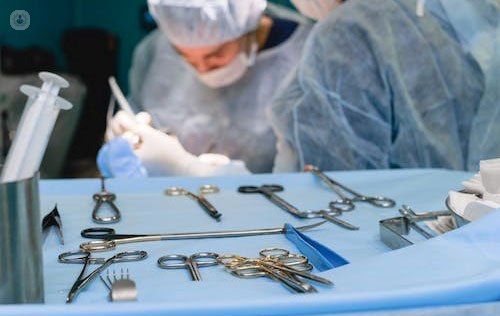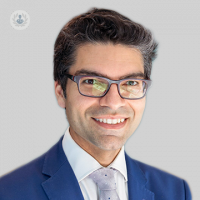An in-depth guide to: Left gastric artery embolisation
Written by:In his latest online article, Mr Ahmed R Ahmed gives us his expert guide to left gastric artery embolisation. He explains what it is, the ideal candidate, who is unsuitable for the procedure, the duration and the risks involved.

What is left gastric artery embolisation?
Left gastric artery embolisation (LGAE) is a minimally invasive medical procedure used to treat certain conditions related to the stomach and the upper gastrointestinal tract. It involves blocking or reducing blood flow to the left gastric artery, which is a branch of the celiac artery that supplies blood to the stomach. The procedure is typically performed by an interventional radiologist or an interventional gastroenterologist.
It is primarily used for two main purposes:
- Treating bleeding ulcers: LGAE can be employed to manage or stop severe bleeding from stomach ulcers that have not responded to traditional medical treatments or endoscopic interventions.
- Treating obesity: In some cases, LGAE has been explored as a potential treatment for obesity. By reducing blood flow to the fundus, the upper portion of the stomach, the procedure may help decrease appetite and food intake, leading to weight loss.
Who is the ideal candidate?
The ideal candidate for left gastric artery embolisation (LGAE) includes individuals who are living with obesity and meet certain criteria. While not limited to these factors, the ideal candidate typically exhibits the following characteristics:
- BMI (Body Mass Index) between 35 and 50: BMI is a measure of body fat based on height and weight. A BMI in this range indicates a level of obesity that may benefit from weight loss interventions.
- Weight less than 150 kg: Candidates with a weight below this threshold are generally considered suitable for the procedure.
- Generally fit and well with no co-morbidities: Co-morbidities are other medical conditions that may exist alongside obesity, such as diabetes, hypertension, or heart disease.
Candidates without significant co-morbidities are more likely to be considered ideal for LGAE
Is there anyone that may not be suitable for this procedure?
There are individuals who may not be suitable candidates for left gastric artery embolisation (LGAE). Some contraindications or factors that may exclude a person from undergoing the procedure include:
- Unsuitable anatomy of the vascular supply to the stomach: If the vascular anatomy is not conducive to the embolisation procedure, it may make LGAE unfeasible.
- Active H. pylori infection or previous peptic ulcer: These conditions may complicate the procedure or pose additional risks.
- Previous history of bariatric surgery: Prior surgical interventions in the upper gastrointestinal tract may affect the feasibility of LGAE.
- Previous contrast allergy: Allergic reactions to contrast agents used in imaging procedures may increase the risk of complications during LGAE.
- Known aorta, renal, or vascular disease: Pre-existing vascular conditions may make the procedure unsafe or less effective.
- Previous malignancy: A history of cancer may impact the decision to perform LGAE due to potential interactions or concerns with ongoing treatment.
- Previous history of radiotherapy: Previous radiation treatment in the abdominal region may affect the feasibility and safety of LGAE.
- Pregnancy: LGAE is generally not recommended for pregnant females due to potential risks to both the mother and the developing fetus.
- Previous history of upper or lower gastrointestinal (GI) bleeding: A history of significant GI bleeding may increase the risk of complications during the procedure.
- Unable to lie supine: The procedure typically involves the patient lying on their back, and individuals unable to assume this position may not be suitable candidates.
The decision to undergo LGAE should be made in consultation with a qualified healthcare provider who can assess the individual's medical history, overall health status, and specific conditions to determine the appropriateness of the procedure. As medical practices may evolve over time, it's important to rely on up-to-date medical advice for individualised patient care.
What is the duration of the procedure?
The left gastric artery embolization (LGAE) procedure typically takes about 45 minutes to complete. It is a minimally invasive intervention performed under sedation. Since LGAE is a relatively short procedure, patients can often go home on the same day after a period of observation to ensure there are no immediate complications
What are the primary risks involved,?
Left gastric artery embolization (LGAE) is generally considered safe, but like any medical procedure, it does carry some risks. The known risks associated with LGAE include:
- Gastric erosions: The embolisation process may lead to irritation or erosions in the stomach lining, which could cause discomfort or gastrointestinal symptoms.
- Vomiting and abdominal pain: Some patients may experience vomiting and abdominal pain immediately after the procedure, but these symptoms are usually self-limiting and resolve on their own.
Mr Ahmed R Ahmed is a highly regarded general, gastrointestinal and bariatric surgeon with over 25 years of experience. You can book an appointment with Mr Ahmed today on his Top Doctors profile.


